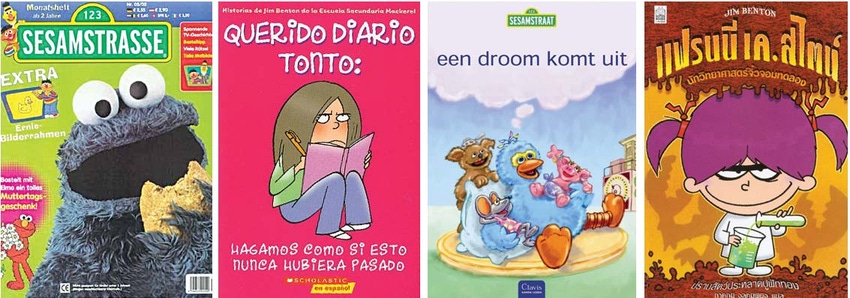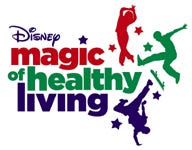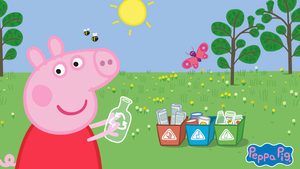Four years after introducing its ground-breaking nutritional guidelines and line of healthy foods for kids, Walt Disney Company is extending its healthy foods program with a new multi-media campaign to promote healthy livi
April 6, 2018

Four years after introducing its ground-breaking nutritional guidelines and line of healthy foods for kids, Walt Disney Company is extending its healthy foods program with a new multi-media campaign to promote healthy living.
Disney's Magic of Healthy Living campaign will leverage the power of young Disney stars, such as Nick Jonas and Brenda Song, who will deliver public service announcements about the campaign on the Disney Channel, ABC and Radio Disney. Magic of Healthy Living will also feature First Lady Michelle Obama and coordinate with her Let's Move campaign to promote healthy living and fight childhood obesity.
"The Magic of Healthy Living is about amplifying the message we already have and tying it all together with one voice," says Embola Ndi, vice president of food, health and beauty in North America for Disney Consumer Products.
The public service announcements began airing in October on the Disney Channel and will run through fall 2011. And some spots will feature Mrs. Obama, who is promoting the Magic of Healthy Living in conjunction with Let's Move.
"Teaming up with Michelle Obama wasn't planned initially," says Ndi. "But the launch worked out timing-wise and it [Let's Move] is a great fit with the message of Magic of Healthy Living."
Disney has come a long way from the days when it used to team up with McDonald's for movie promotions using Happy Meals, a practice it ended five years ago. The company introduced its new healthy food guidelines in October 2006 as a way to provide kids and their families with healthy foods to eat and encourage a healthy lifestyle. 
The program is based on the Dietary Guidelines for Americans developed by two of the country's top child health and wellness experts. The guidelines put a cap on the number of calories contained in Disney kid-sized portions, establishes limits on the percentage of sugar and fat in meals and snacks and weeds out trans-fats.
"We consulted with experts not only to make sure the program complied with current guidelines, but to ensure we were in-step with where they were heading," says Ndi.
Armed with that information, Disney started to overhaul its line of licensed foods.
"We looked at it from two perspectives," says Ndi. "First, we looked at foods that are inherently healthy, like fruits and vegetables, and incorporated them into our portfolio. Then we looked at things that aren't inherently healthy, like frozen foods and snacks, and reformulated them to meet guidelines."
Reformulating foods typically loaded with salt and fat wasn't easy.
"I don't know how many hours we spent trying to develop chicken nuggets that met our guidelines but still tasted good," says JD Edwards, senior vice president of food, health and beauty for DCP.
To help develop new products, Disney teamed with the Institute of Food Technology to stage an annual Nutritious Food for Kids Competition. The competition asks contestants to create a nutritious, market-relevant snack that incorporates a fruit or vegetable and targets children. This year's grand prize winner was Mickey's Pocket Pies, which are shaped like Mickey's head and blend peaches, bananas, butternut squash and carrots inside a whole wheat crust.
And to make sure its new foods received wide distribution, Disney focused on partnering with key suppliers instead of retailers, assuming their vendor partners would ensure wide distribution on retail shelves. 
"Part of making an impact is to make the brand available to as many consumers as possible and that's why we focused on partnering with key manufacturers," says Edwards.
In the international market, it took a slightly different approach. In 2007, DCP launched a co-branding deal with British retail giant Tesco for a line of healthy foods for kids. And in February 2010, DCP announced a partnership with Carrefour Group for a new line of healthy foods incorporating Disney characters now being sold at stores in France, Belgium, Spain and Italy. At the same time, it continues to partner with large vendors, signing a licensing deal in January 2010 with Ukraine dairy producer Unimilk for a line of Disney-licensed milk in Russia.
But not every food has to meet its strict nutritional guidelines. Edwards says that, from the beginning, Disney recognized that not everything kids eat has to be healthy and established the 85 percent to 15 percent ratio for that reason.
"We were realistic and allowed the 15 percent margin for special occasions and treats," says Edwards. "What would a little girl's birthday party be without a Disney Princess birthday cake?"
Disney does try to limit consumption of what it calls "indulgence items" by selling most of them in single-serving packages.
Four years into the program, Disney has reached its goal of having 85 percent of its licensed foods meet its "better for you" nutritional guidelines. And along the way, it achieved two major milestones in food sales.
"We've now sold more than 1.3 billion individual servings of fruits and vegetables and a half-billion servings of dairy products," says Edwards.
And with those goals in place, Disney is ready to take the program to another level with the Magic of Healthy Living. "We're very proud to take the next step in our long-term commitment to helping families achieve healthier lifestyles," says Bob Iger, Disney's chief executive officer.
You May Also Like






